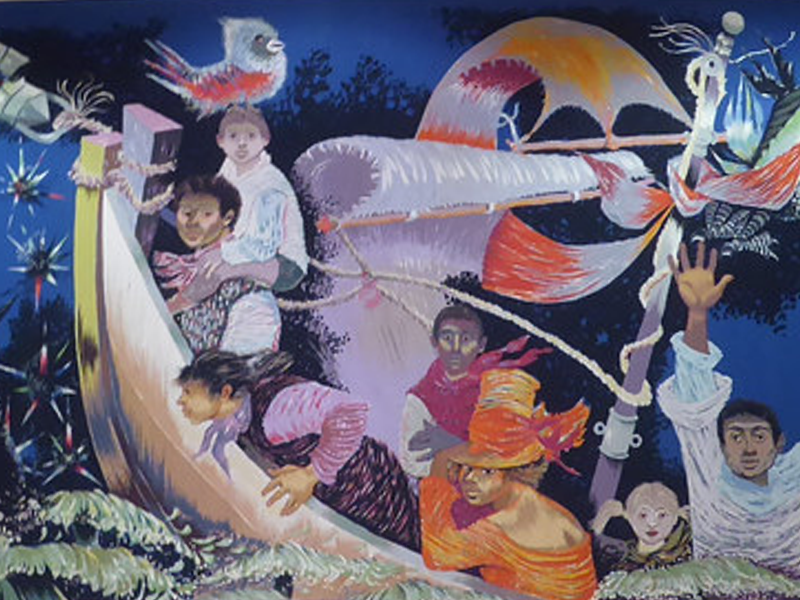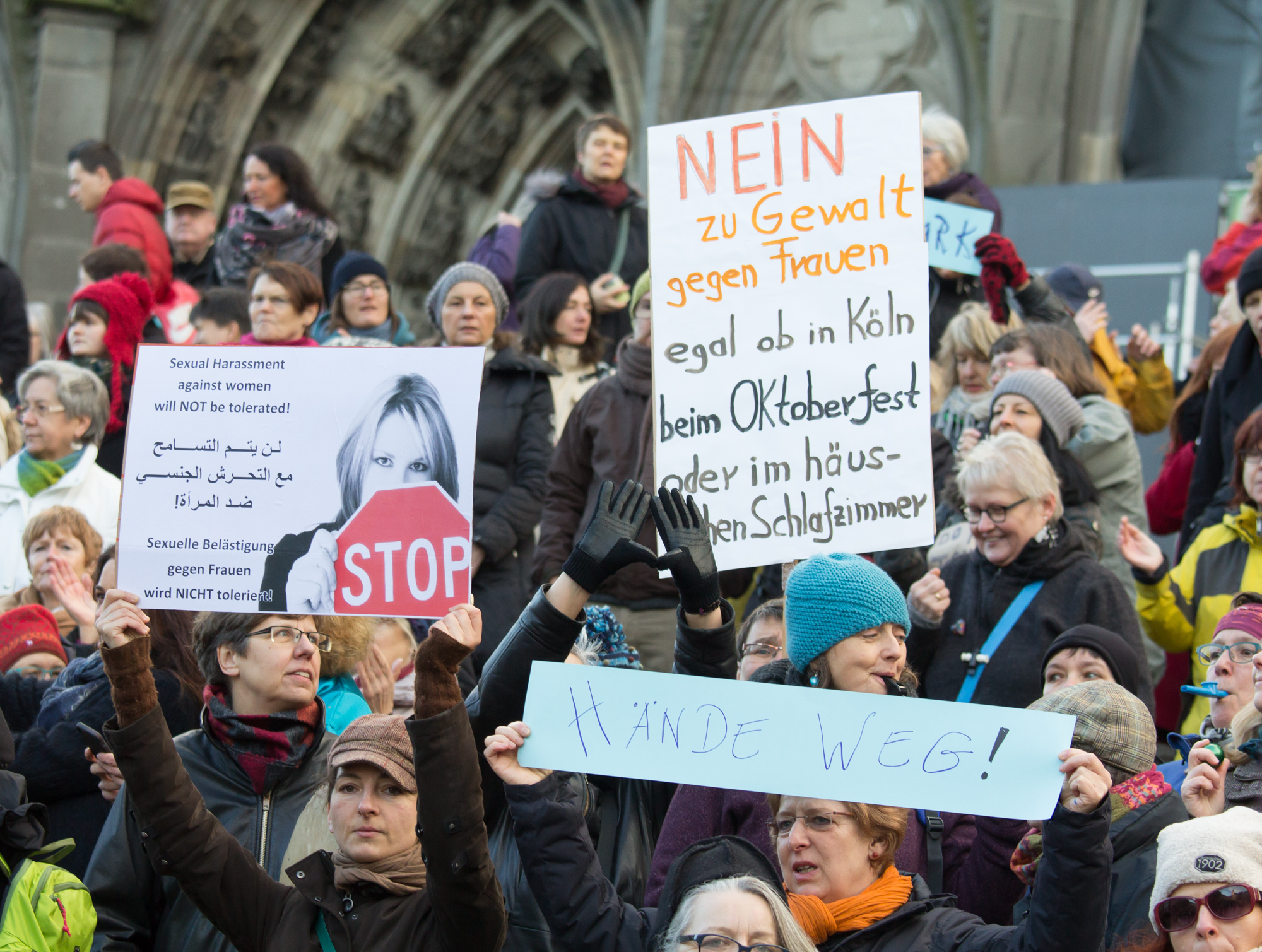To mark the 75th anniversary of NATO, the NATO Association of Canada, Toronto, organizes several events that will highlight NATO’s alliance and Canada. We received the following invitation: “We invite you to be a part of this initiative and share your organization’s contribution to NATO’s collective history.” My, or rather our “organization” is the Canadian Association for the Advancement of Netherlandic Studies (CAANS). As CAANS’ aims are to stimulate an awareness of, and interest in, Dutch, Flemish and South-African culture, we thought that a few words about Belgium’s 1965 gift to NATO might highlight what NATO stands for
In 1949, NATO was first headquartered in London. However, because of lack of space it was moved to Paris in 1952, first to the Palais de Chaillot and in 1960 to the hastily built A-shaped building at Porte Dauphine, in the vicinity of the Bois de Boulogne.
In 1962, the Belgian government held a painting contest. With a nod to the Flemish tapestry tradition, the winner’s painting would be hung as a tapestry on one of the walls of the building at Porte Dauphine. The jury consisted of the committee of ambassadors that represented the then NATO-member countries in the North Atlantic Council (NAC), the political wing of NATO. These countries were: Belgium, Canada, Denmark, the FDR (without West-Berlin), the United Kingdom, France, Greece, Ireland, Iceland, Italy, Luxembourg, the Netherlands, Portugal, Turkey, and the United States.
The winner was the Belgian painter Roger Somville (Schaerbeek 1923-Tervuren 2014). The image of his painting Le Triomphe de la Paix was transferred on a tapestry over 13 meters long and 4 meters high by the Royal Manufacturers of tapestry De Wit based in Mechelen, Belgium.
On June 3, 1965, Minister André de Staercke, Permanent Representative of Belgium with the NAC, offered the tapestry to the then Secretary General of NATO, Manlio Brosio, noting that Flemish tapestries have decorated the walls of the world with religious, mythological, or historical topics since the 12th century. Brosio accepted the tapestry, depicting a boat caught in a storm, with the following words: “Puisse la barque de l’OTAN être capable elle aussi de résister aux assauts de la tempête” (‘May NATO’s boat also be able to withstand the assaults of the many storms to come’).
The tapestry was hung in the Salle des Pas Perdus across NATO’s emblem Animus in Consulendo Liber (‘in discussion a free mind’), and near the NATO compass star, a star that symbolizes the path to peace.
NATO’s motto Animus in Consulendo Liber could not have been better expressed than by Somville’s winning painting. Guisset (2009:182) describes it as a boat that defies the angry waves, waves in the form of two birds that symbolize the vanity and the insanity of war. There is a father carrying his son on his shoulders, while his mother anxiously leans on the side of the boat trying to peer into the future. A bird is poised on the boy’s head. What is the meaning of the bird? In the man dressed in a white shirt, and in the sabres, can be discerned Goya’s El dos de mayo de 1808 (‘the second of May 1808’) and El tres de mayo 1808 (‘the third of May 1808’). However, that is not all. Indeed, Somville’s imagery is said to be inspired by the 1943 poem An die Nachgeborenen (‘To those born after’) by the Marxist poet Bertolt Brecht (Augsburg 1898-East-Berlin 1956). Below a passage in the original German, with the accompanying English translation:
| Ihr, die ihr auftauchen werdet aus der Flut In der wir untergegangen sind Gedenkt Wenn ihr von unseren Schwächen sprechtAuch der finsteren ZeitDer ihr entronnen seid. | You, who shall emerge from the floodIn which we have gone under, Remember When you speak of our weaknesses, Also the dark timeThat you have escaped. |
In a letter to the editor of the New York Times of January 29, 1958, a NATO official wrote that NATO was created to halt communism’s aggression in Europe without taking to war. The choice of an image by a communist painter who was greatly inspired by a Marxist poet is therefore remarkable and a big step on NATO’s path to peace, symbolized in the 1953 NATO logo, a star with four points within a circle that stands for the unity of NATO’s member states.
Epilogue
Belgium’s tapestry only spent two years in NATO’s headquarters in Paris. In 1967, president De Gaulle decided that France had to withdraw from the “integrated military structure” of NATO, which resulted in the relocation of NATO to Belgium.
The military headquarters, Supreme Headquarters Allied Powers Europe (SHAPE), moved to Casteau, a village near Mons, connected by highway to Belgium’s capital, Brussels.
NATO’s political headquarters, NAC, moved to the Boulevard Leopold III in Brussels. In 1967, NATO’s emblem was taken over by the Université Paris Dauphine and the tapestry moved to the Somville room of the Palais des Congrès in Brussels. Once in a while, it could be seen at exhibitions, such as for example from May 14 to April 4, 2001, in the building of the United Nations in Genève.

In 1971, a seven-meter-high and seven-meter-wide oxidized iron sculpture was installed on the Cour d’Honneur near NATO’s headquarters. It was designed by the Belgian architect Raymond Huyberechts, who had let himself be inspired by NATO’s compass star.
In 1985, Belgium’s gift to NATO symbolizing the aims and the “mutual interconnectedness” of the then fourteen NATO member countries was given back to Belgium. Since that year, the tapestry Le Triomphe de la Paix is part of the modern art collection in the Berlaymont-building, seat of the European Commission in Brussel. The new NATO-headquarters, situated since 2018 at the other side of the Boulevard Leopold III, got a tapestry of a different size that would fit better. We do not know what it depicts. Let’s hope that it symbolizes self-reflection, the strength of interconnectedness for the now 31 member states, and wariness of dissolution from within.
With this article about Belgium’s contributions to NATO’s fine arts collection, our organization CAANS joins Canada’s celebration of NATO’s 75th anniversary. HAPPY ANNIVERSARY!
By Mary Eggermont-Molenaar Dutch citizen residing in Calgary Secretary of the Canadian Association for the Advancement of Netherlandic Studies National (CAANS)
Photo: North Atlantic Treaty Organization




